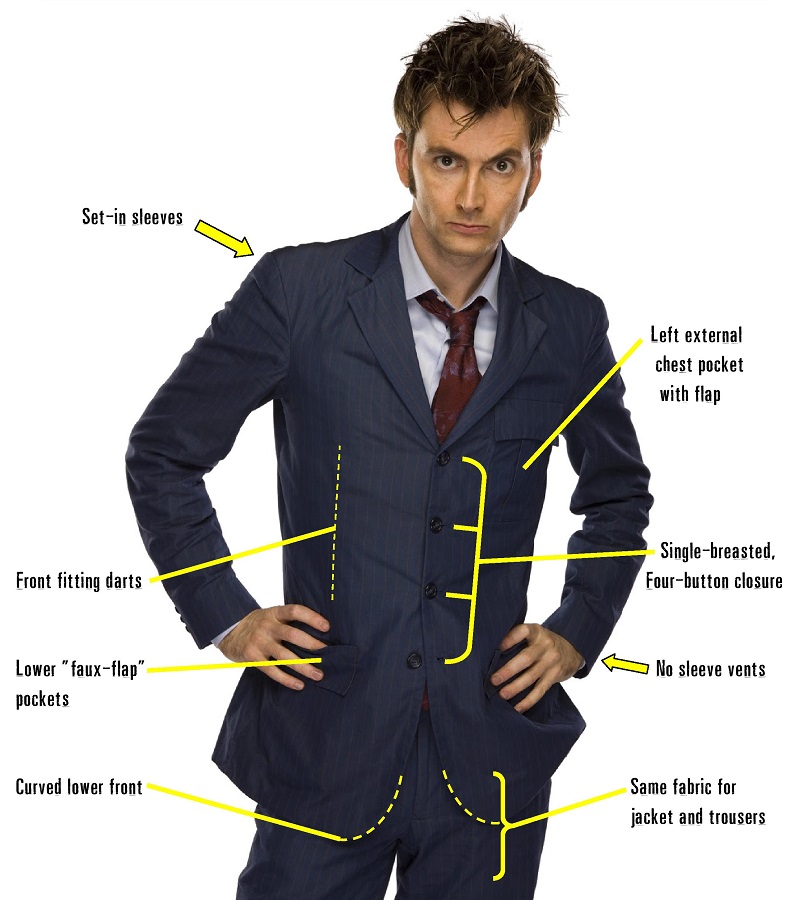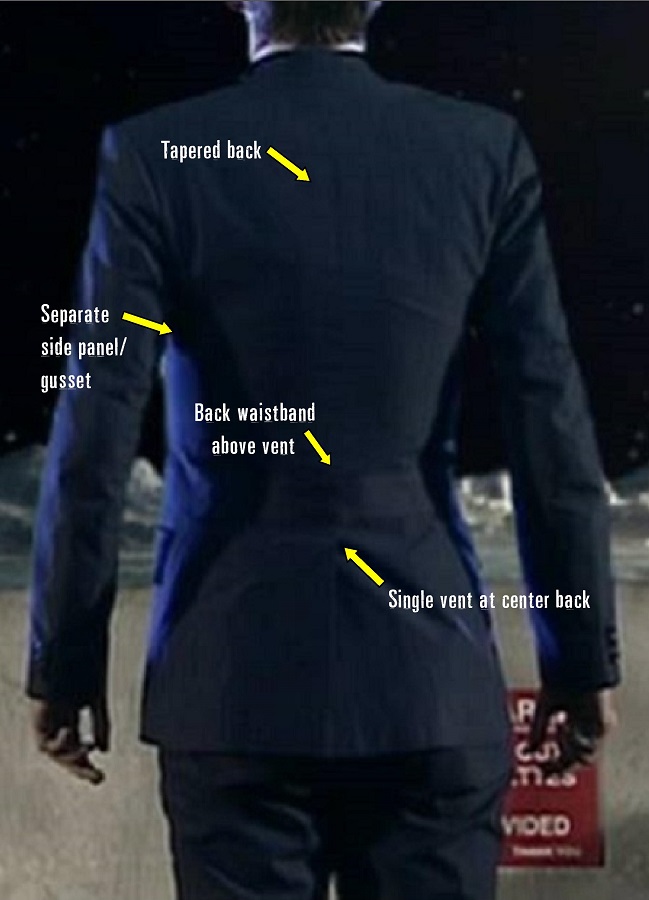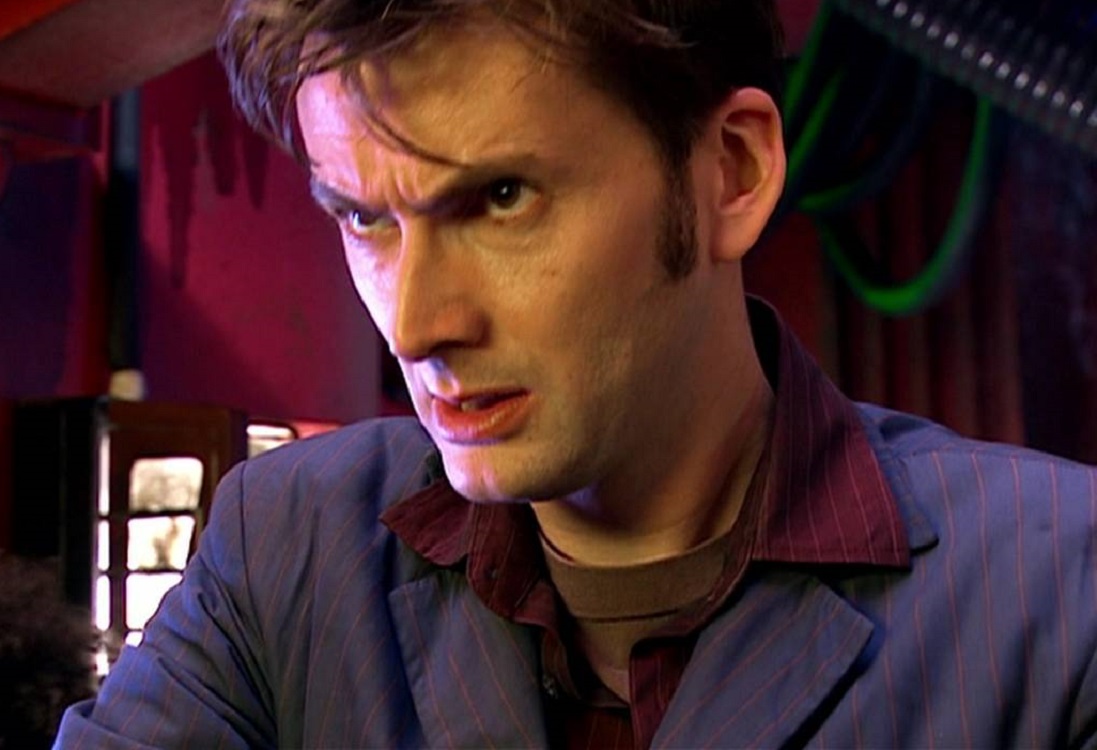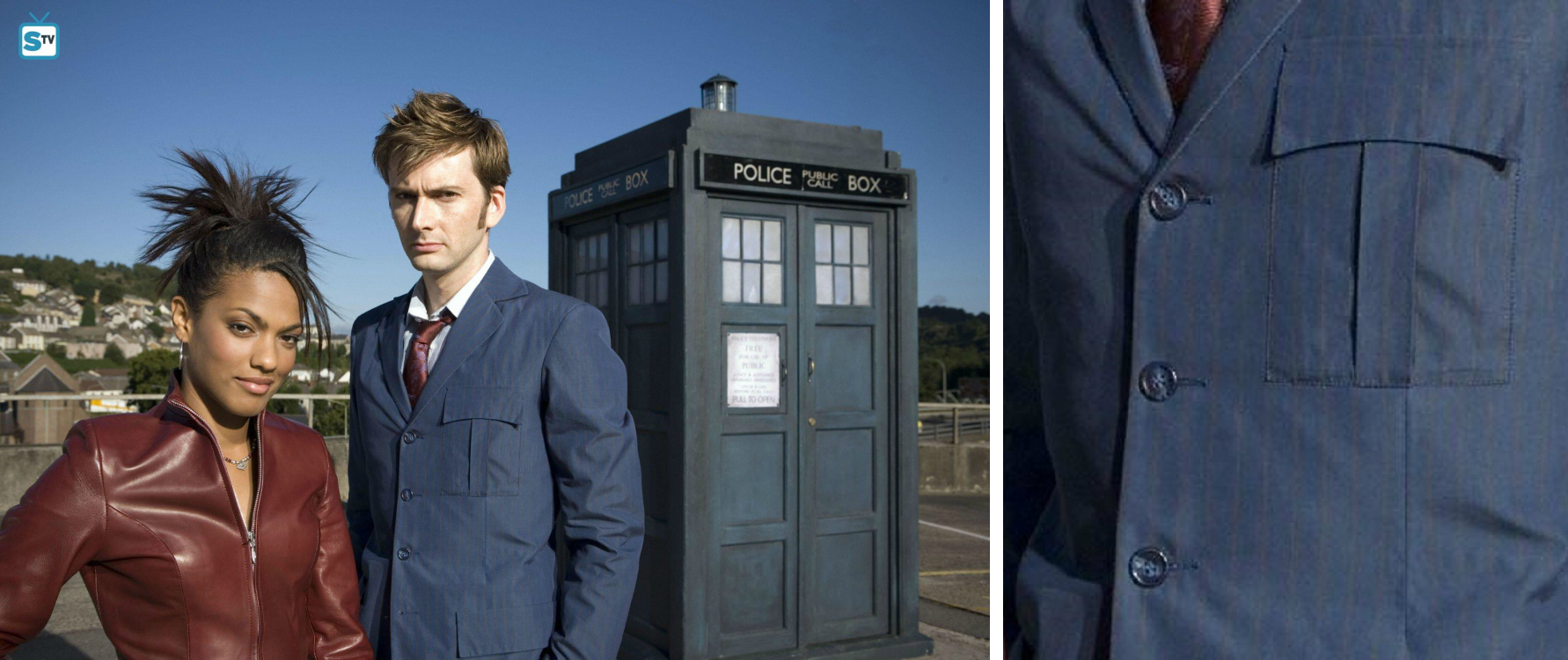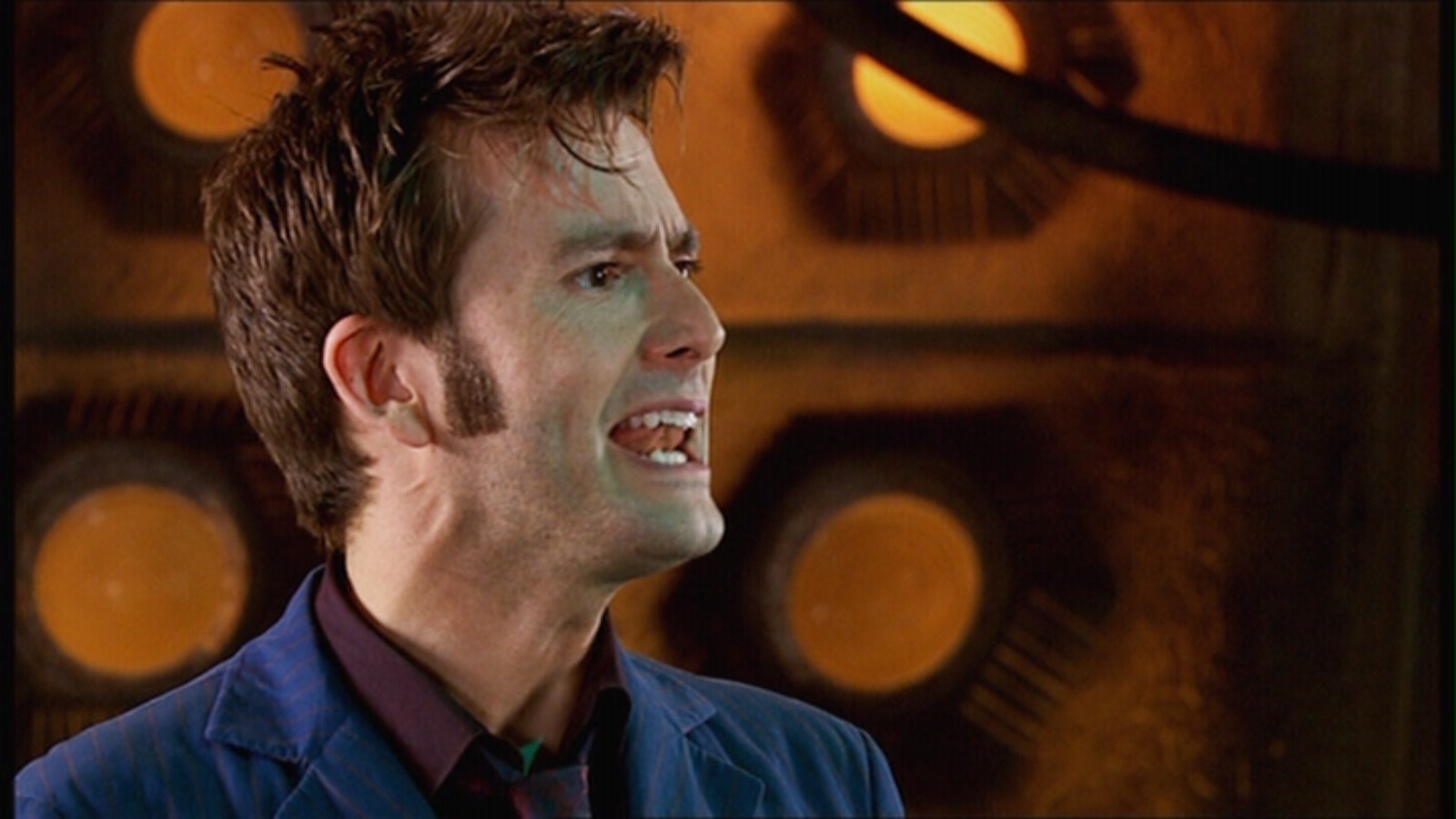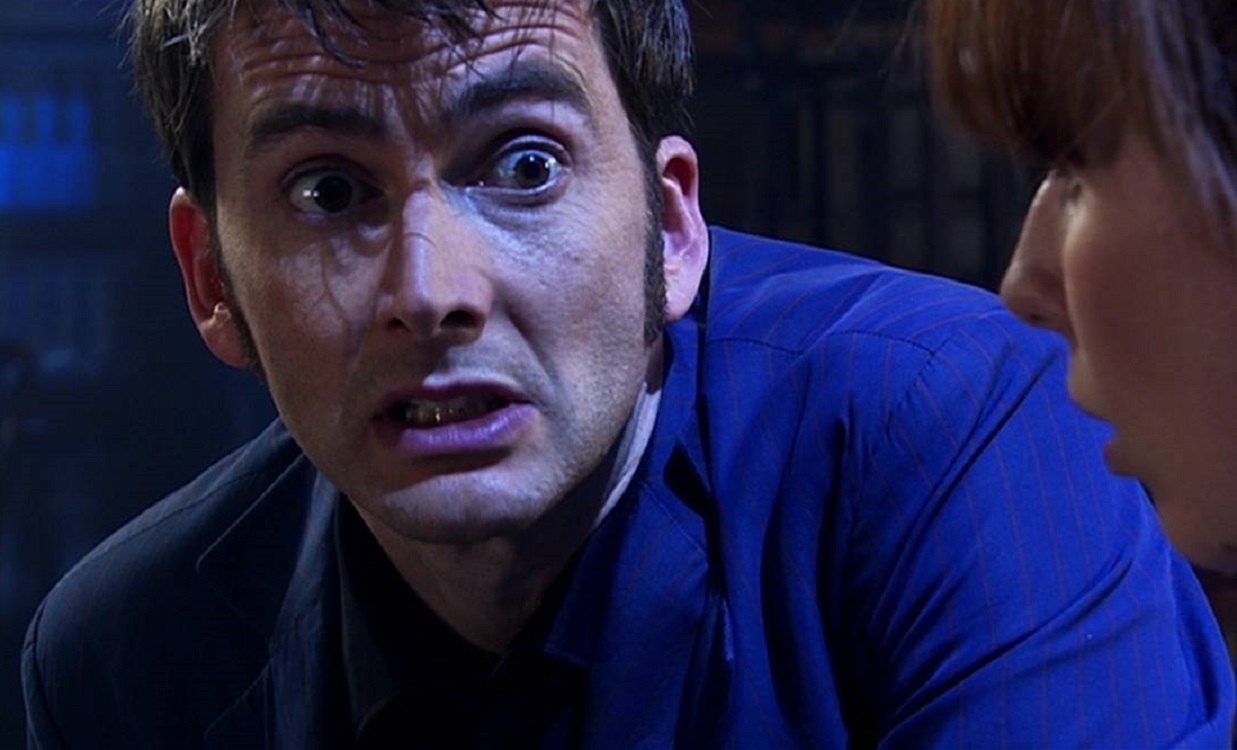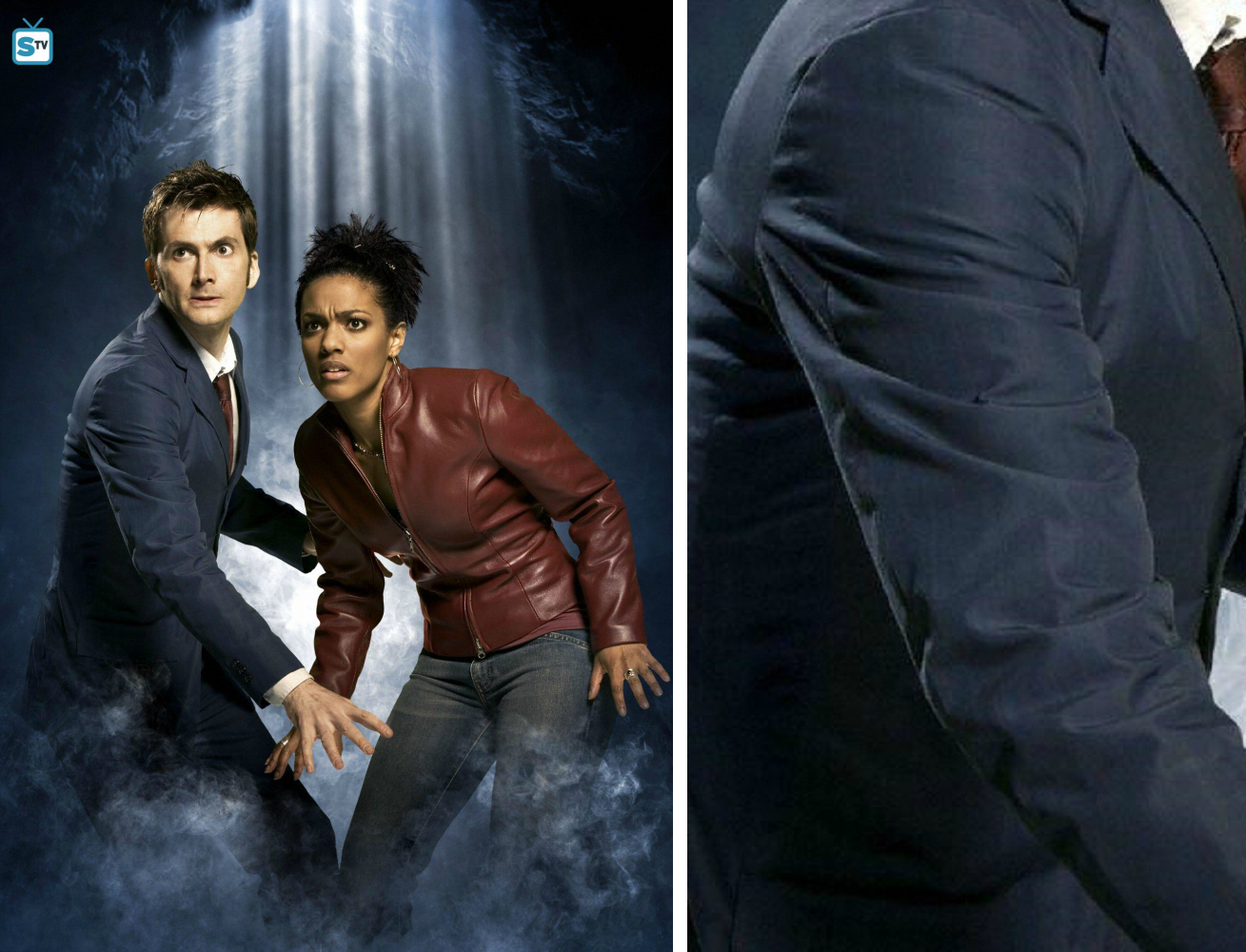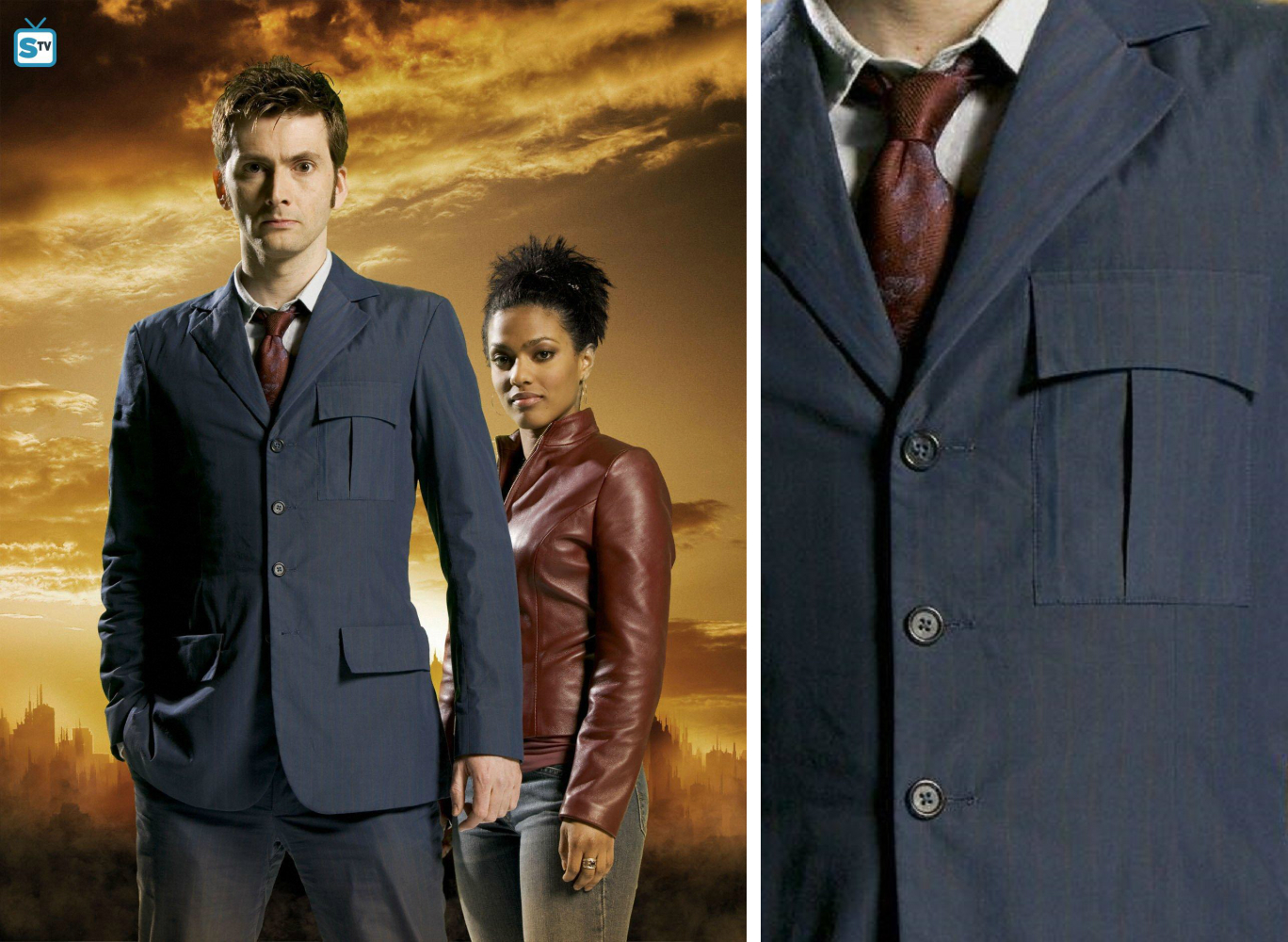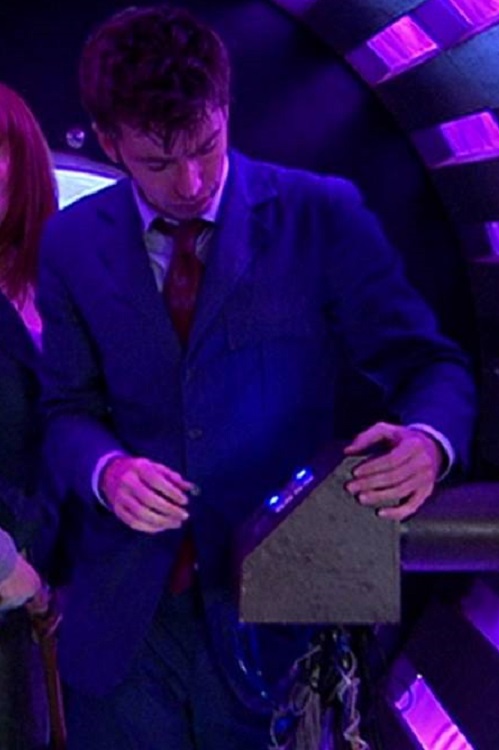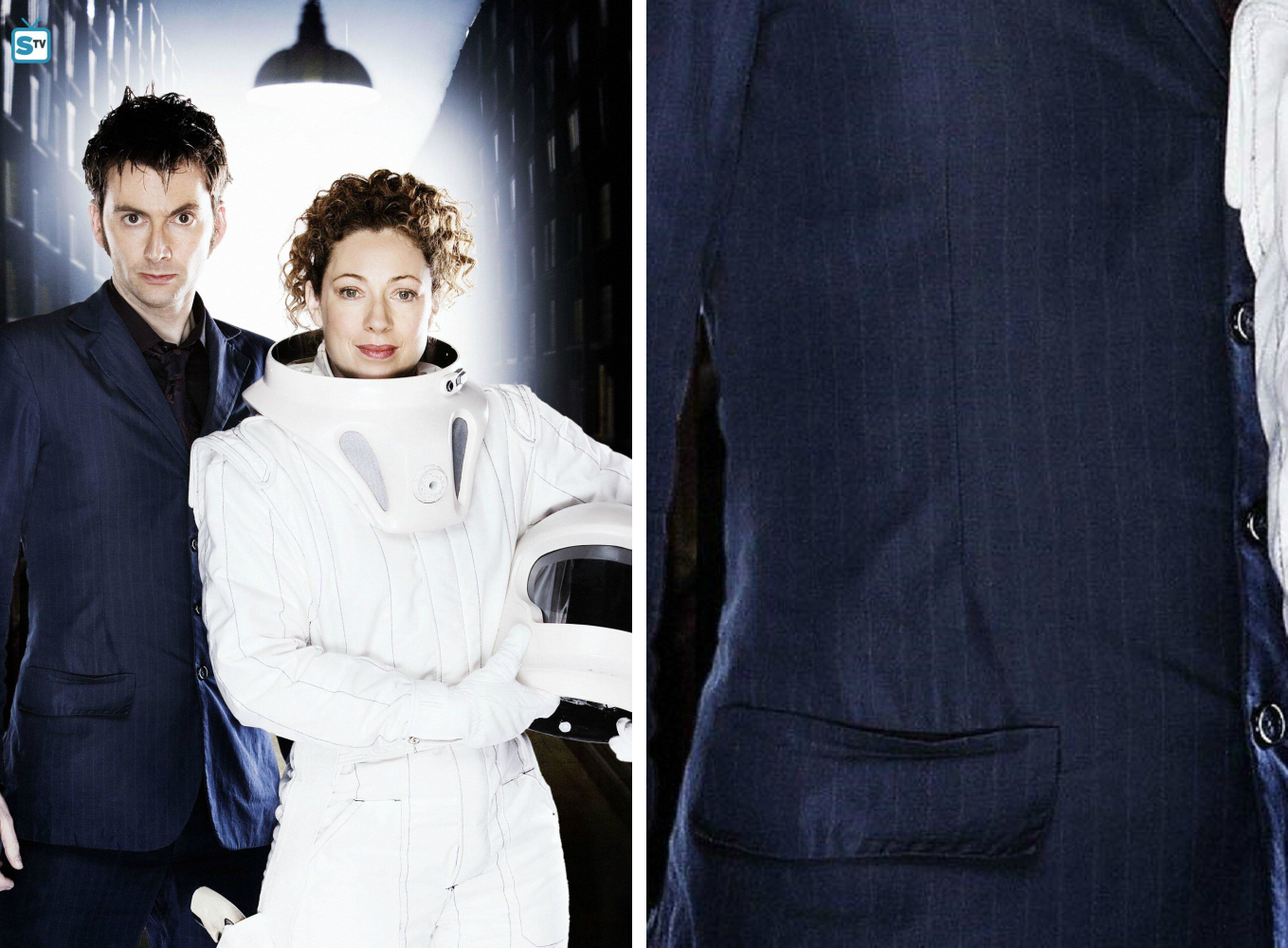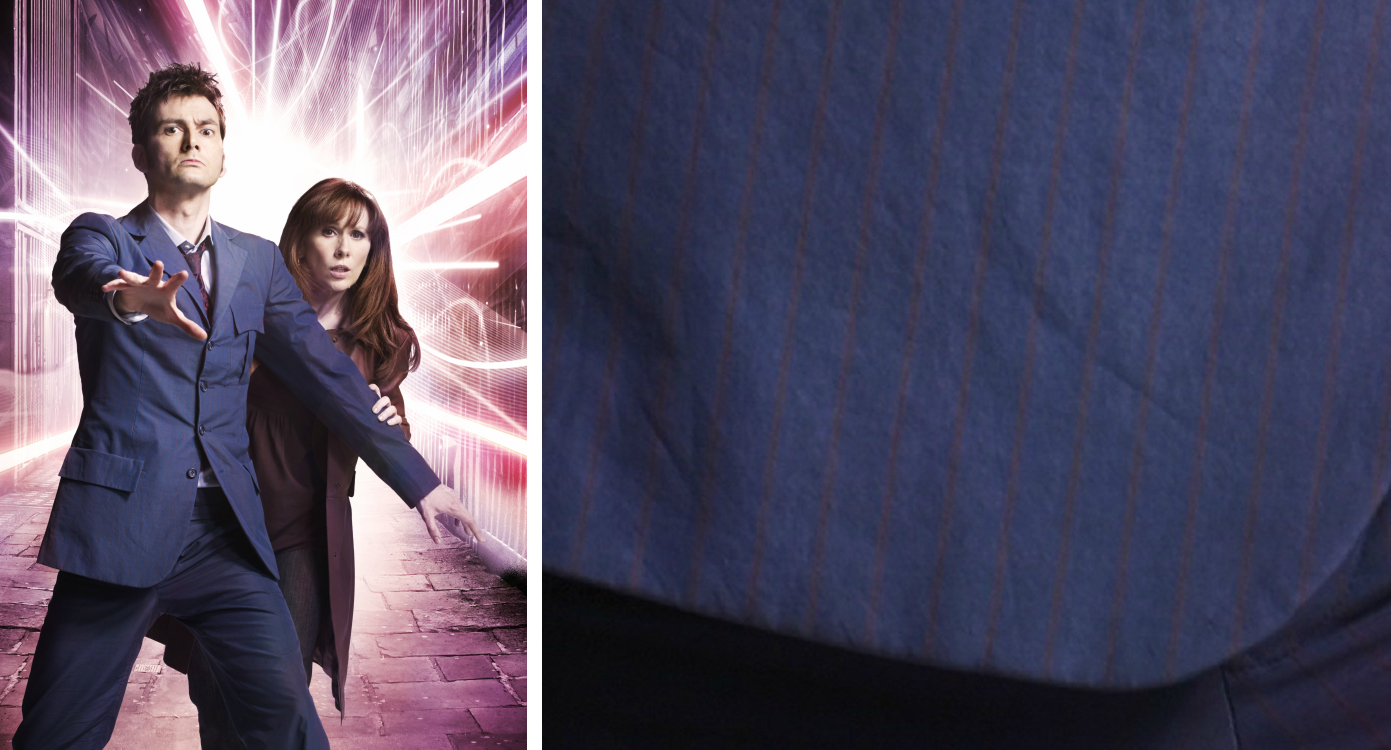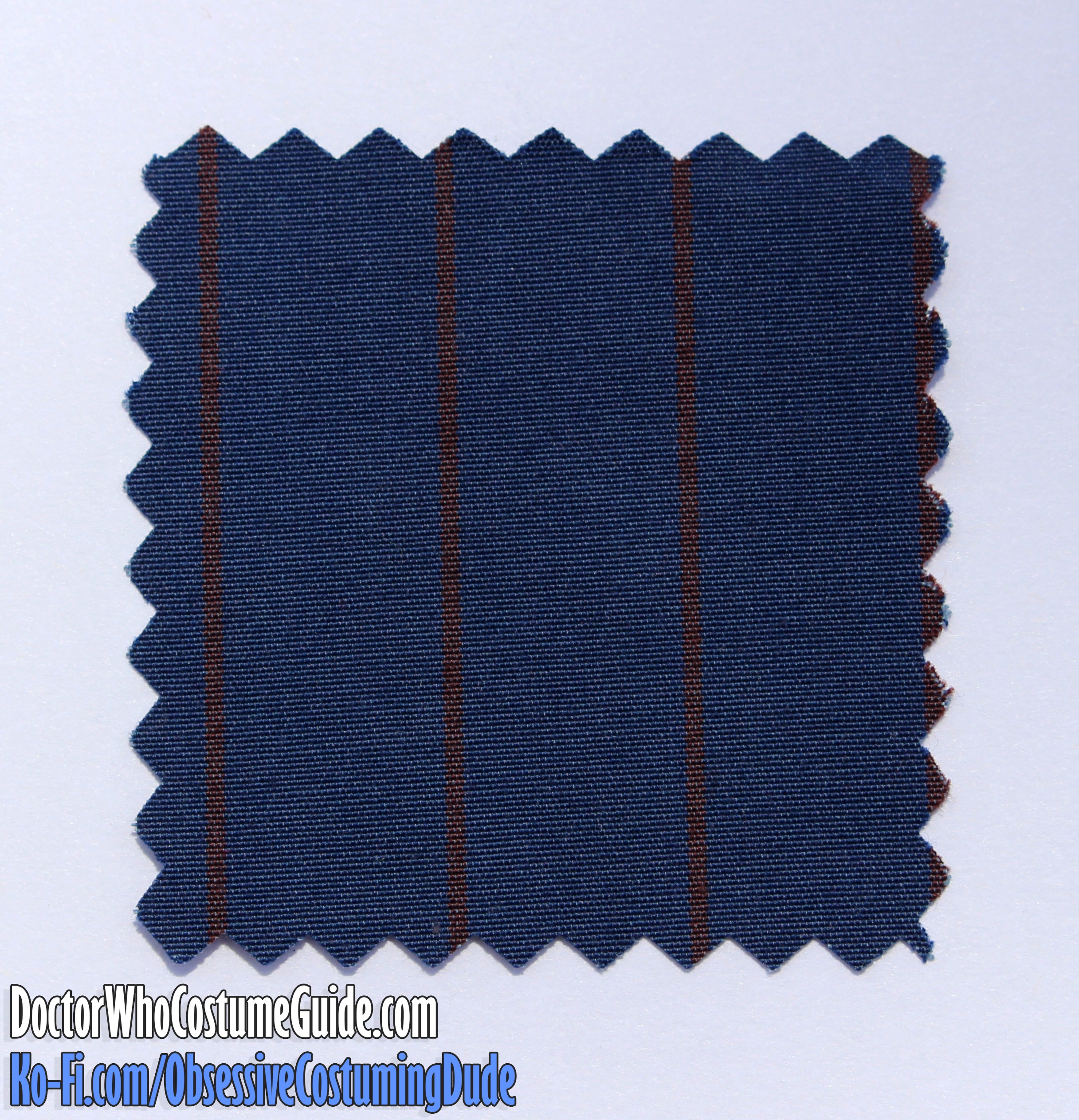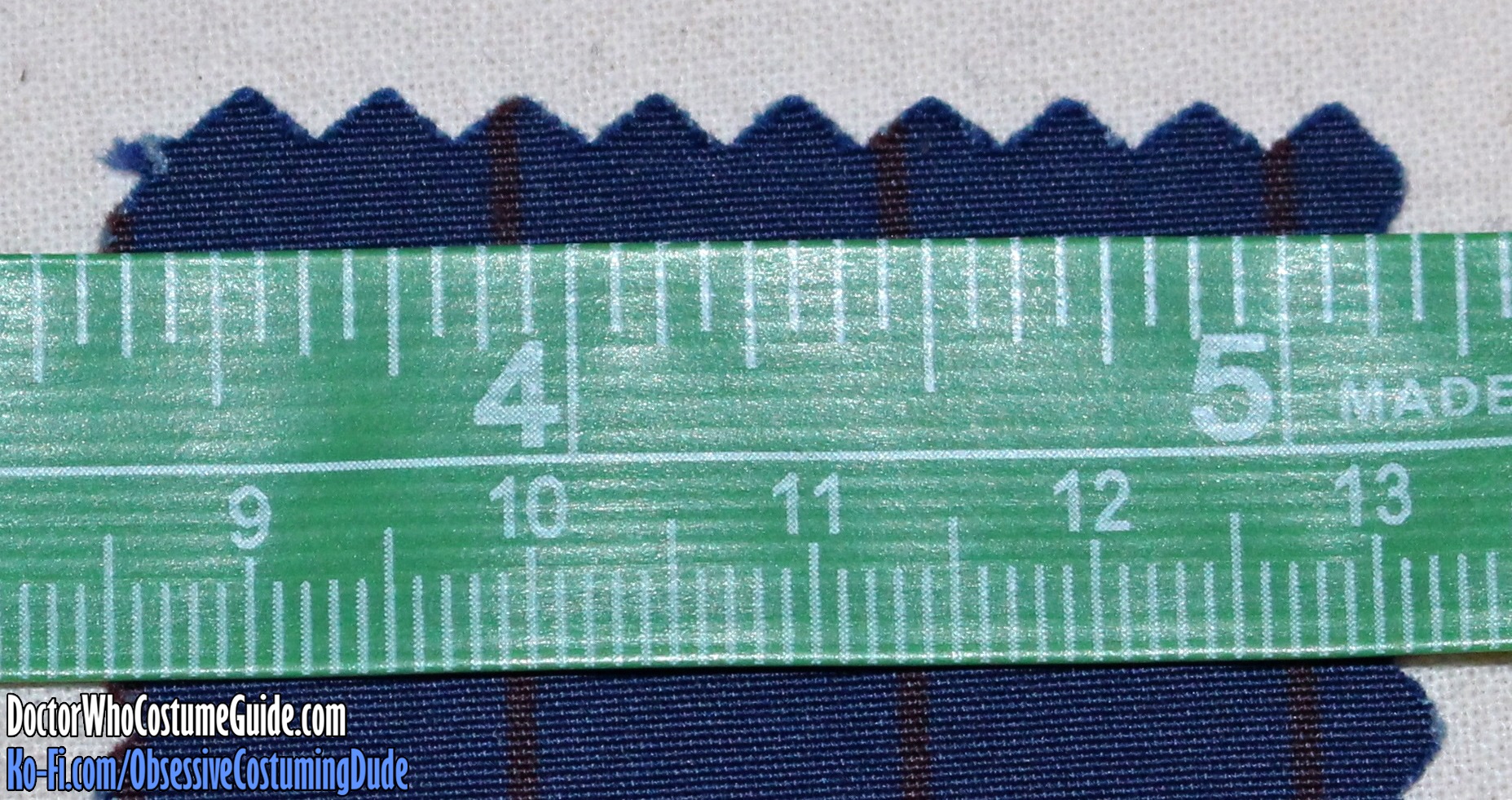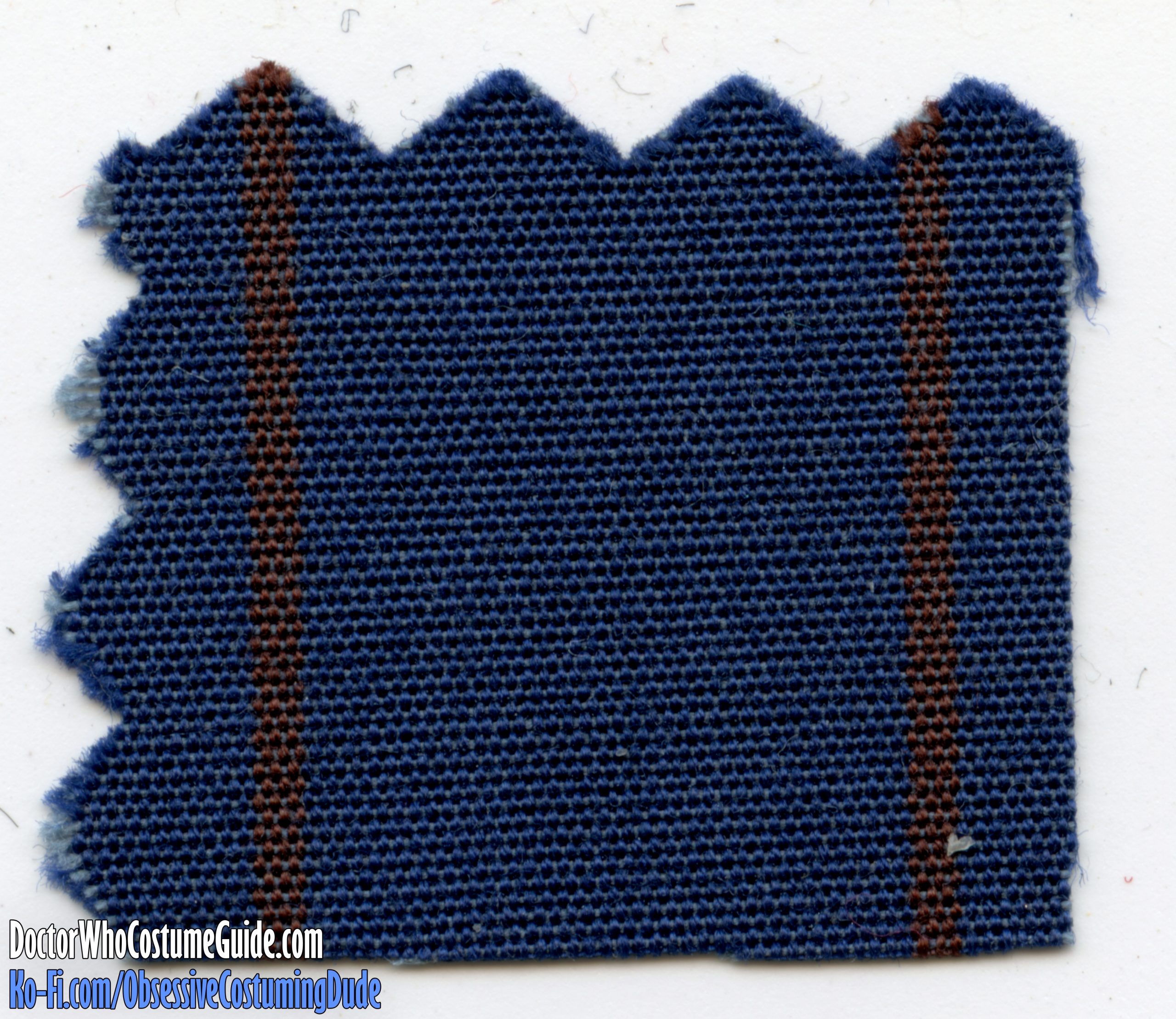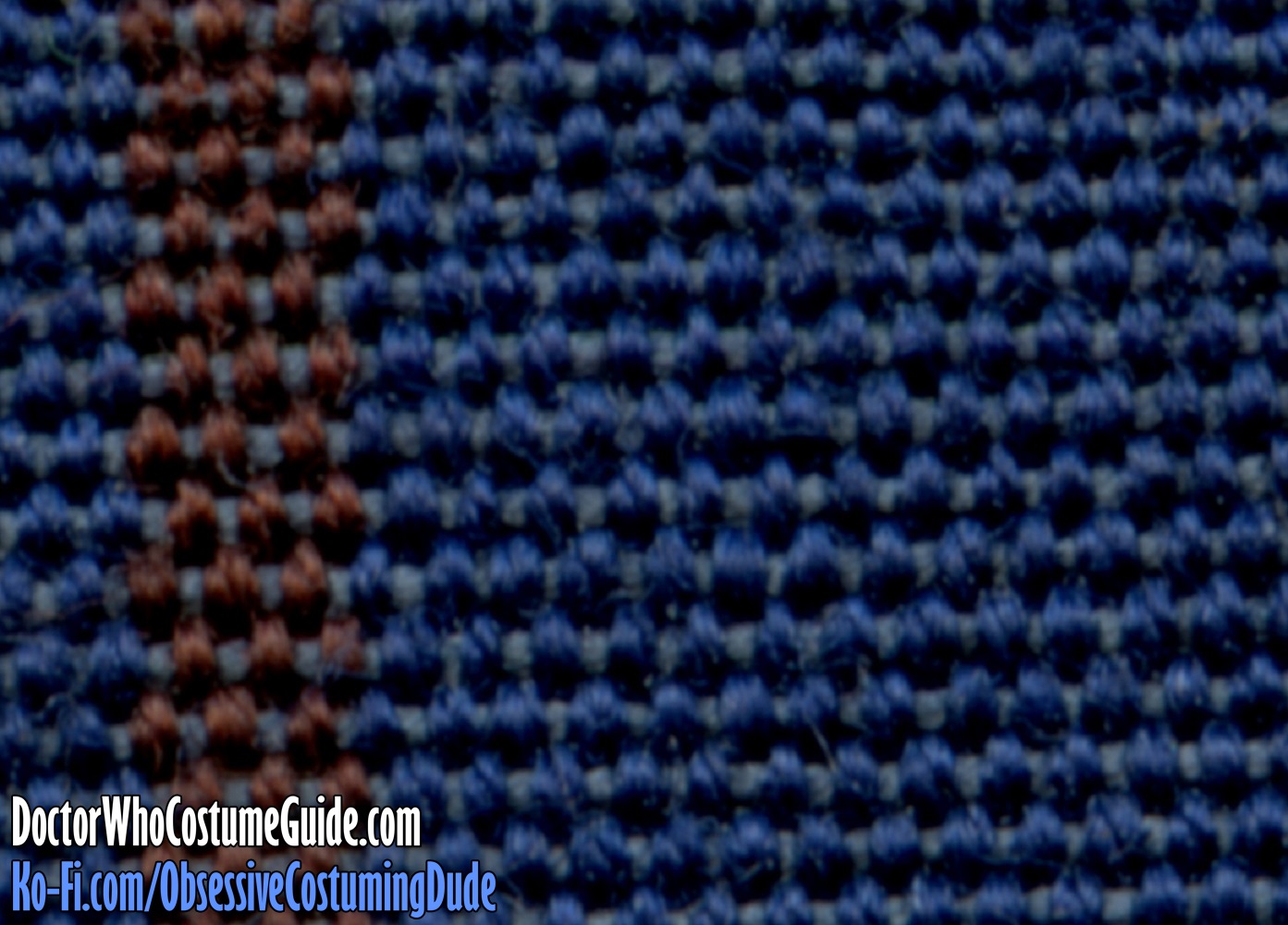Overview
The 10th Doctor’s blue suit was first introduced at the beginning of David Tennant’s second season (season three), and it served a twofold purpose:
First, the demands of production use had taken their toll on his original brown suit(s), and there probably weren’t many pairs of GAP trousers on hand for replacement suits.
Second, Tennant and costume designer Louise Page discussed the Doctor having a new costume to visually represent the passage of time since the end of the previous season, and to aesthetically show that the Doctor was perhaps in a new phase.
Designs for a new costume were tossed around – some of them quite an extreme departure from his previous look – but what was ultimately decided on was a blue suit which, while obviously a different color, was actually quite stylistically similar to his brown suit.
In the DVD audio commentary to “Smith and Jones” (the season 3 premiere), David Tennant and Russell T. Davies discussed the introduction of the blue suit … Tennant said, “I wanted a new suit. I wanted to mix it up a little bit … for a variety of reasons. Mostly, I think it’s nice that the Doctor’s silhouette is recognizable, and that he’s always in kind of the same thing, but I like the idea that it’s not too much of a uniform as well. So there’s much debate as to how you change it and keep it the same … It’s episode one in the new series; there’s been a gap since ‘The Runaway Bride,’ we don’t quite know what the Doctor’s necessarily been away and done.”
The wardrobe color scheme remained consistent: browns and blues, although with the blue suit having “rust”-colored pinstripes the color palette was expanded into the reds with his shirts, ties, and shoes.
(I believe it also worth noting that for season three, before a new round of brown suits was incorporated into the costume rotation for season four, the Doctor typically only wore the brown suit for episodes during which he wasn’t seen in that costume much, such as “Human Nature,” “The Family of Blood,” and “Blink.”)
Before we dive in, it’s worth noting that over the course of his era, the 10th Doctor wore (at least) six different blue suits, all with their own subtle variations.
However, these suits were all basically the same design; the differences were minor.
They all shared most of the same major characteristics, which we’ll look at first in this overview, and then in more detail over the course of the analysis.
The 10th Doctor’s blue suit (all of them) was nearly identical to the brown suit in its overall style and construction … although Tennant wore (at least) four subtly different brown suits as well.
This analysis is primarily based on the blue suit and its subtle variations, but much of what we’ll be covering in this analysis applied to the brown suit as well. (See my 10th Doctor brown suit analysis for a specific look at that costume.)
The major stylistic characteristics of the 10th Doctor’s blue suit were:
- Single-breasted, four-button closure
- Curved lower front
- Left external chest pocket with flap
- Two lower “faux-flap” pockets (one on each front)
- Front fitting darts
- Separate side panel/gusset
- Single vent at center back
- Back waistband above vent
- Set-in sleeves with no sleeve vents
- Jacket and trousers made of the same fabric
As you can probably observe, the design of the suit subtly accentuated David Tennant’s above-average height and slim frame, particularly through the use of the jacket’s four-button closure. The front darts and side panel/gusset also favorably contributed to a well-fitted jacket.
About five minutes into the season 3 episode “Daleks in Manhattan” audio commentary, Louise Page mentioned that his brown suit was based on a 1930s suit, which is pretty cool! By extension, the blue suit was as well.
Now that you have a general familiarity with the 10th Doctor’s suit, let’s move on to a detailed analysis.
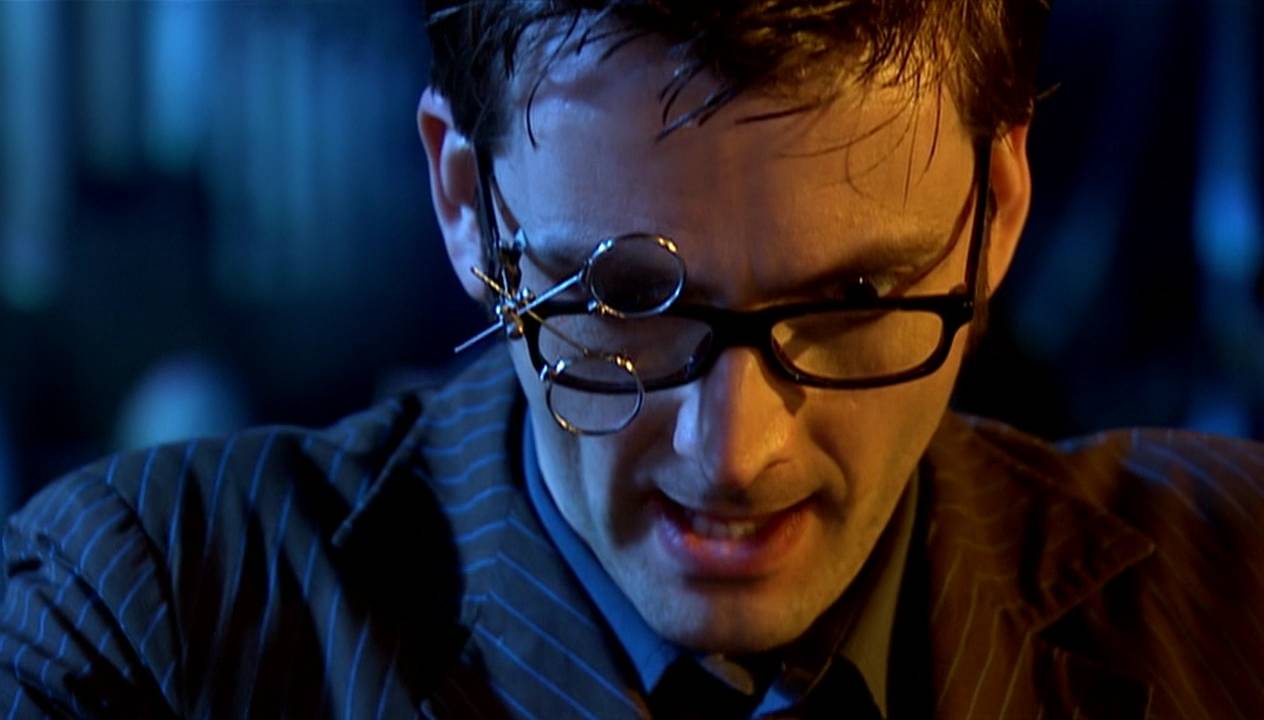
Fabric
One of the most distinguishing characteristics of the 10th Doctor’s blue suit was the fabric itself.
Louise Page told me that the original fabric was a lightweight cotton shirting, which was much lighter in color so she had dyed to darken it.
Interestingly, the blue suit fabric varied drastically in appearance on screen (subjectively, of course), particularly in regard to the pinstripes.
Unlike the pinstripes on the 10th Doctor’s brown suit, the pinstripes on the blue suit were often barely visible:
Often, only the faintest hint of the pinstripes could be seen.
On the screen-used fabric, the pinstripes were approximately 1mm wide and spaced approximately 13mm apart.
Daniel Pawlik was kind enough to take a high-resolution scan of the fabric for documentation:
As it turns out, there’s a certain “secret ingredient” to this fabric that causes it to almost magically respond so differently in different lighting and from different angles …
If we zoom way (way) in, you can see that this fabric isn’t two colors (blue + red), but actually three!
Daniel owns a swatch of the original, undyed shirting fabric, and he says that those horizontal, light-blue-ish fibers were originally white – and from this, we can deduce that their current color is that which the original fabric was dyed to transform it into the overall colors used for Tennant’s suits.
Observe how the third, lighter-blue color is horizontally woven into both the blue fabric base and the “rust”-colored pinstripes.
This is not only why the blue base often appeared to be so many different colors, but also why the pinstripes on the original suits could sometimes be almost imperceptibly subtle.
Back away more than a couple inches or so from the original fabric, and only two colors register to the eye (unless you have a Geordi La Forge VISOR), but the third color is what gives it its “magical” quality!

